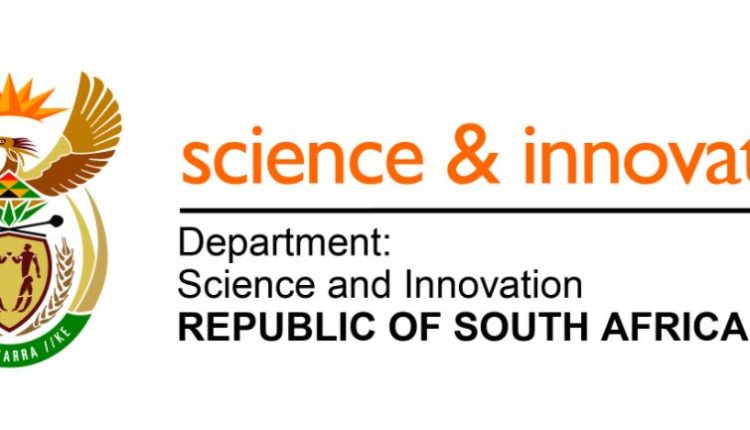Science, Technology and Innovation on presentation of South Africa’s National Astro-Tourism Strategy to Parliament
On Tuesday, 18 February, the Minister of Science, Technology and Innovation, Prof. Blade Nzimande, supported by Ms. Nomalungelo Gina, Deputy Minister of Science, Technology, and Innovation, and Ms. Maggie Sotyu, Deputy Minister of Tourism, led the presentation of South Africa’s National Astro-Tourism Strategy to Parliament.
Last year, the Minister of Tourism, Ms. Patricia De Lille, tabled the National Astro-Tourism Strategy in Cabinet. Subsequent to this, in September last year, Cabinet approved this Strategy and in the same month, Minister De Lille and Minister Nzimande presided over the launch of this Strategy in Carnarvon in the Northern Cape.
This past Tuesday, this Strategy was presented at a joint sitting of the Portfolio Committees of Science, Technology and Innovation and Tourism.
In highlighting the strategic importance of astronomy and tourism to South Africa, Minister Nzimande stated that “South Africa is fast becoming one of the leading nations in the discipline of astronomy and this is why in August last year, we hosted the prestigious General Assembly of the International Astronomical Union. This was first time this prestigious gathering was hosted on the African continent.
Equally, we also have a very robust tourism sector as a country, which is a major contributor to GDP and is expected to grow significantly over the next 5 to 10 years.”
Minister Nzimande also used the briefing to highlight some of South Africa’s most notable investments in astronomy infrastructure, during the democratic era, which include the 10-metre Southern African Large Telescope (SALT) in Sutherland, which is the largest optical telescope in the Southern Hemisphere.
The MeerKAT telescope in Carnarvon, which is a precursor to the SKA project, which he said was “going to be South Africa’s single biggest scientific infrastructure.”
Outlining the benefits of these investments, Minister Nzimande indicated that “the investments in these high calibre scientific instruments in astronomy enabled an exponential increase in the number of South African astronomers from 60 (only 5 of them were radio astronomers) to about 300 in the last 30 years.”
The Minister Nzimande also used the opportunity to explain what astro-tourism was and further outlined the objectives of South Africa’s Astro-Tourism Strategy.
The Minister stated that “… science tourism involves experiences enjoyed when visiting scientific attractions such as scientific landmarks, including museums, laboratories, observatories, and higher educational institutions where research is conducted.
It is also important to realise that astro-tourism is built around the traditions inherited from our ancestors by different ethnic cultures in observing the skies from time immemorial. Astro-tourism therefore draws heavily from the vast and untapped reservoirs of our indigenous knowledge systems.
Astro-tourism also encompasses all offerings such as observatories, telescopes, museums, planetariums, meteorite sites, visitor centres, amateur astronomy clubs, stargazing, tour-guides, astro-routes, and accommodation establishments, etc.”
In outlining the strategic importance of the Astro-Tourism Strategy, Minister Nzimande stated that “We regard science and tourism as mutually reinforcing and therefore building on our competitive advantages in astronomy and tourism, we seek to use the Astro-Tourism Strategy to achieve the following:
- Enhance the performance of South Africa’s astronomy tourism sector through infrastructure developments and improvements, optimal functioning of various streams of astronomy with tourism offerings and boosting transformation by enhancing the livelihoods of local communities;
- Position South Africa as a world class Astro tourism destination that will yield sustainable benefit-sharing opportunities by maximising appropriate investments, improving marketing efforts, and enhancing visitor experience in South Africa;
- Educate communities about the importance of preserving our dark skies and radio silence as this is a geographic advantage that needs to be protected for astrotourism to thrive; and
- Most importantly, we also seek to use this strategy to drive meaningful socio-economic development within poor and rural communities, through science tourism.”
The Strategy is anchored on three pillars, which are: indigenous celestial narratives and human capacity development; infrastructure development; and inclusive tourism growth and partnerships – and requires an estimated budget of over R352 million.
The implementation of the Astro-Tourism Strategy is the joint responsibility of the Departments of Science, Technology and Innovation and Tourism, which have established a Steering Committee that comprises officials from both departments, the Northern Cape Department of Economic Development and Tourism.
The DSTI’s entity, the National Research Foundation (NRF) and its sub entities the South African Radio Astronomy Observatory (SARAO) and South African Astronomical Observatory (SAAO), also form part of this Steering Committee.
Distributed by APO Group on behalf of Department of Science and Innovation, Republic of South Africa.


